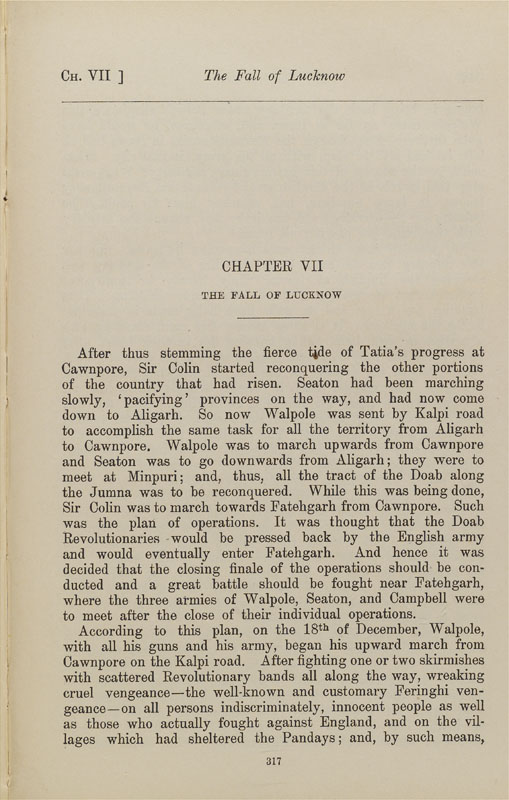Ch. VII ]
The Fall of Lucknow
CHAPTER VII
THE FALL OF LUCKNOW
After thus stemming the fierce tide of Tatia's progress at
Cawnpore, Sir Colin started reconquering the other portions
of the country that had risen. Seaton had been marching
slowly, 'pacifying' provinces on the way, and had now come
down to Aligarh. So now Walpole was sent by Kalpi road
to accomphsh the same task for all the territory from Ahgarh
to Cawnpore. Walpole was to march upwards from Cawnpore
and Seaton was to go downwards from Ahgarh; they were to
meet at Minpuri; and, thus, all the tract of the Doab along
the Jumna was to be reconquered. While this was being done.
Sir Cohn was to march towards Fatehgarh from Cawnpore. Such
was the plan of operations. It was thought that the Doab
Revolutionaries would be pressed back by the English army
and would eventually enter Fatehgarh. And hence it was
decided that the closing finale of the operations should be con¬
ducted and a great battle should be fought near Fatehgarh,
where the three armies of Walpole, Seaton, and Campbell were
to meet after the close of their individual operations.
According to this plan, on the 18*^ of December, Walpole,
with all his guns and his army, began his upward march from
Cawnpore on the Kalpi road. After fighting one or two skirmishes
with scattered Revolutionary bands ah along the way, wreaking
cruel vengeance—the well-known and customary Feringhi ven¬
geance—on all persons indiscriminately, innocent people as well
as those who actually fought against England, and on the vil¬
lages which had sheltered the Pandays; and, by such means,
317
|








